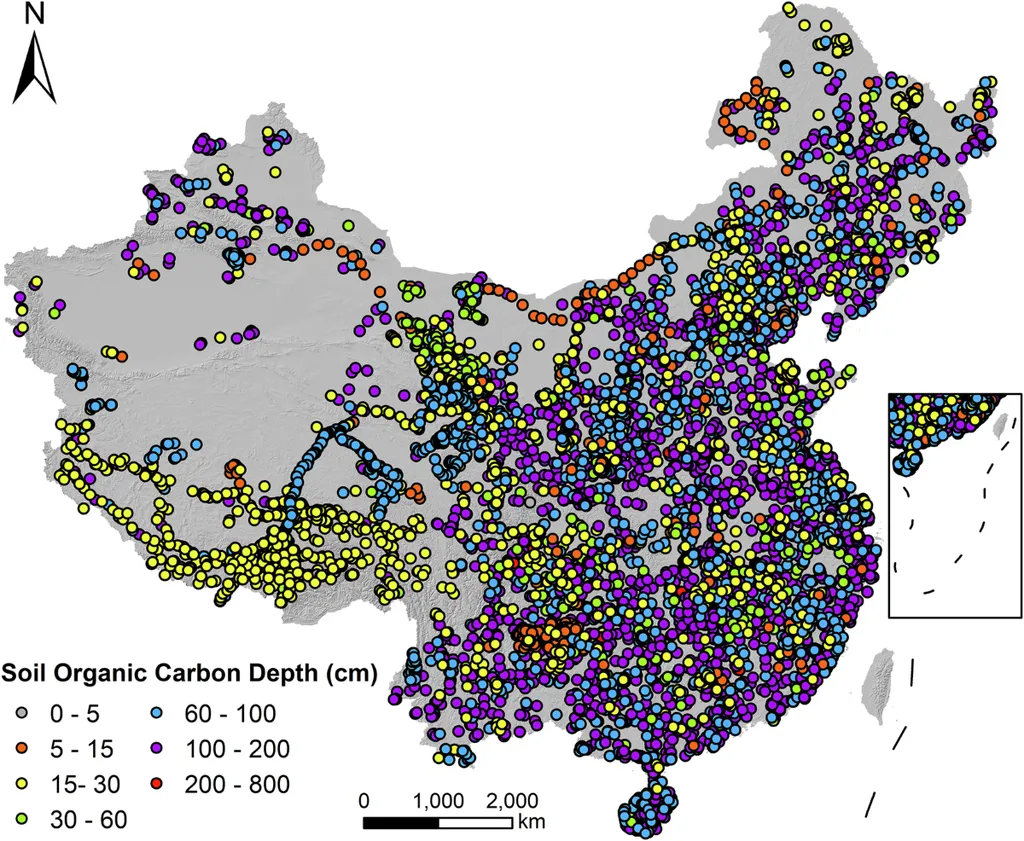In the quest to boost agricultural productivity and sustainability, scientists are turning to advanced remote-sensing technologies and machine-learning algorithms to unlock the secrets hidden beneath our feet. A recent study led by Xuzhou Qu from the School of Land Science and Technology at China University of Geosciences in Beijing has made significant strides in this area, offering a promising method for mapping soil organic matter (SOM) in cultivated lands using Landsat 8 satellite imagery and a cutting-edge algorithm known as GA-AdaBoost.
Soil organic matter is a critical component of healthy soil, playing a pivotal role in maintaining soil structure, nutrient supply, and water regulation. Accurate mapping of SOM can provide invaluable insights for farmers and agricultural managers, enabling them to make informed decisions about soil management and crop cultivation. However, the spatial heterogeneity of different land use patterns has posed a substantial challenge to developing robust inversion methods for SOM using satellite remote-sensing technology.
Qu and his team aimed to overcome these challenges by improving the accuracy of estimating cultivated land SOM from remote-sensing images during the bare-soil period. They extracted 15 spectral features from Landsat 8 images and applied a technique called recursive feature elimination based on cross-validation (RFECV) to identify the optimal feature combination. The researchers then compared multiple machine-learning methods optimized by genetic algorithms (GAs) and particle swarm optimization to pinpoint the best method for estimating SOM.
The results of their study, published in the IEEE Journal of Selected Topics in Applied Earth Observations and Remote Sensing (translated to English as “IEEE Journal of Selected Topics in Applied Earth Observations and Remote Sensing”), revealed that the features screened by RFECV showed improved modeling accuracy over unscreened features. Moreover, the highest accuracy of estimating SOM was achieved by the GA-optimized adaptive boosting (GA-AdaBoost) method, with an impressive R² value of 0.66, a root-mean-square error of 5.93 g/kg, and a mean absolute error of 4.70 g/kg.
“This study demonstrates the potential of combining remote-sensing technology with advanced machine-learning algorithms to accurately estimate soil organic matter at a regional scale,” said Qu. “Our findings can significantly enhance agricultural productivity and sustainability by providing farmers and agricultural managers with precise information about soil health and nutrient management.”
The commercial impacts of this research are substantial, particularly for the energy sector. Accurate mapping of SOM can help identify areas with high soil carbon sequestration potential, which is crucial for developing carbon offset projects and mitigating climate change. Additionally, improved soil management practices can enhance crop yields and reduce the need for synthetic fertilizers, leading to more sustainable and cost-effective agricultural systems.
As the world grapples with the challenges of climate change and food security, the need for innovative solutions in agriculture has never been greater. The research conducted by Qu and his team offers a promising approach to addressing these challenges by harnessing the power of remote-sensing technology and machine learning. By providing accurate and reliable information about soil organic matter, this method can pave the way for more sustainable and productive agricultural practices, ultimately benefiting farmers, consumers, and the environment alike.
The study’s findings also open up new avenues for future research in the field of soil science and remote sensing. As Qu notes, “Further studies could explore the application of this method to different types of cultivated lands and various environmental conditions, as well as the integration of additional spectral features and machine-learning algorithms to improve the accuracy and robustness of SOM estimation.”
In conclusion, the research led by Xuzhou Qu represents a significant step forward in the quest to improve agricultural productivity and sustainability through advanced remote-sensing technologies and machine-learning algorithms. By providing accurate and reliable information about soil organic matter, this method offers a powerful tool for farmers, agricultural managers, and policymakers to make informed decisions about soil management and crop cultivation, ultimately contributing to a more sustainable and food-secure future.

